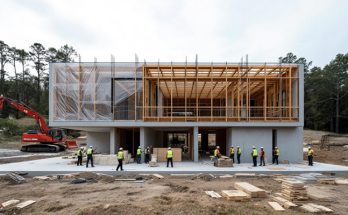Forensic engineering is the science of investigating and analyzing failures in structures, machines, and materials. Whether it’s a collapsed bridge, a malfunctioning machine, or a building fire, forensic engineering witness expert play a vital role in determining what went wrong. Their work helps prevent future failures, resolve legal disputes, and improve safety standards. But what exactly does the forensic engineering process involve? Let’s break it down in simple terms.
1. Identifying the Problem
The first step in forensic engineering is identifying the issue that needs to be investigated. This could be a structural failure, a product defect, or an accident. For example:
- Why did a building collapse?
- What caused a car engine to fail?
- How did a fire spread so quickly?
Clearly defining the problem sets the foundation for the entire investigation.
2. Collecting Evidence
Once the problem is identified, forensic engineers gather evidence from the site of the failure or accident. This involves:
Documenting the Scene:
Taking photographs, videos, and notes to capture the condition of the site.
Collecting Samples:
Removing damaged parts, materials, or debris for further analysis.
Reviewing Records:
Examining blueprints, maintenance logs, inspection reports, or user manuals related to the failed object or structure.
This step is critical because preserving evidence ensures the investigation is accurate and reliable.
3. Analyzing the Evidence
After collecting evidence, engineers use various tools and techniques to analyze it. This includes:
Visual Inspections:
Looking for cracks, corrosion, or other signs of failure.
Laboratory Tests:
Conducting chemical, mechanical, or thermal tests on materials to understand their behavior.
Simulation and Modeling:
Using computer software to recreate the failure and test different scenarios.
Forensic engineers rely on their expertise in physics, mechanics, and material science to interpret the data and find clues about what went wrong.
4. Determining the Cause of Failure
Using the evidence and analysis, forensic engineers work to pinpoint the exact cause of the failure. Was it due to human error, design flaws, material defects, or environmental factors? For instance:
- A building might collapse because of poor construction practices.
- A machine could fail due to wear and tear that was not addressed.
- A bridge might fail because it wasn’t designed to handle unexpected loads.
By identifying the cause, engineers can help prevent similar issues in the future.
5. Reporting Findings
Once the investigation is complete, forensic engineers create a detailed report summarizing their findings. This report often includes:
- The evidence collected.
- The methods used for analysis.
- The conclusions about the cause of failure.
In many cases, these reports are used in court as evidence during legal disputes or insurance claims.
6. Making Recommendations
Finally, forensic engineers provide recommendations to prevent future failures. This could involve changes in design, improved maintenance practices, or stricter safety regulations.
Final Thoughts
Forensic engineering is like solving a mystery, but with science. It’s a meticulous process that requires attention to detail, expert knowledge, and logical reasoning. By understanding the causes of failures, forensic engineers help make our world safer and more reliable.




